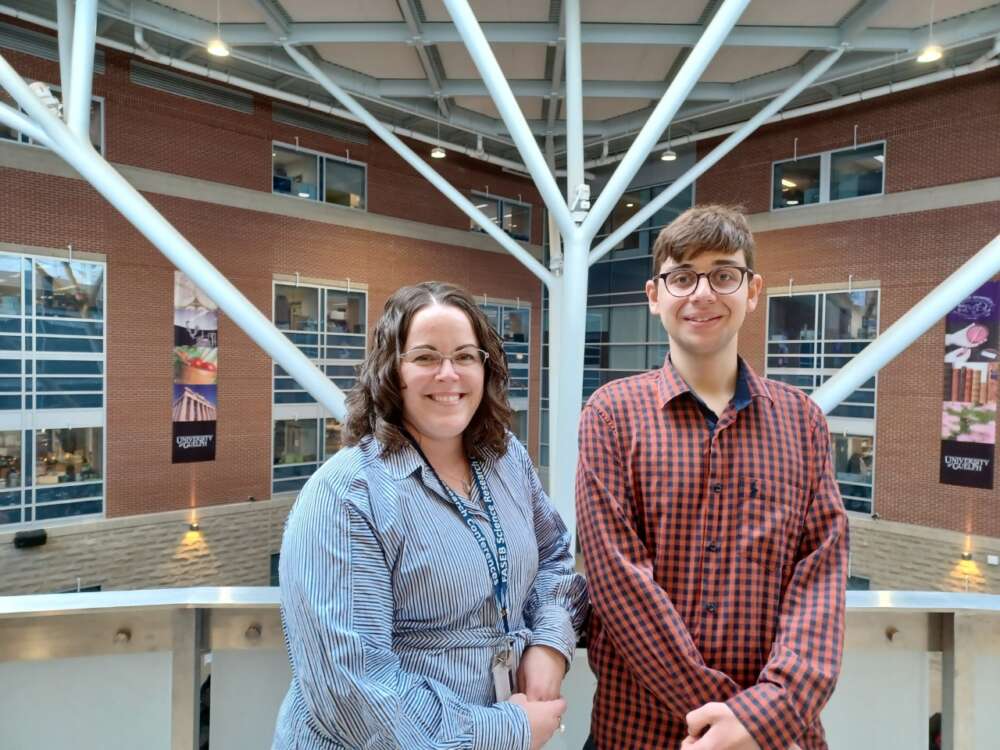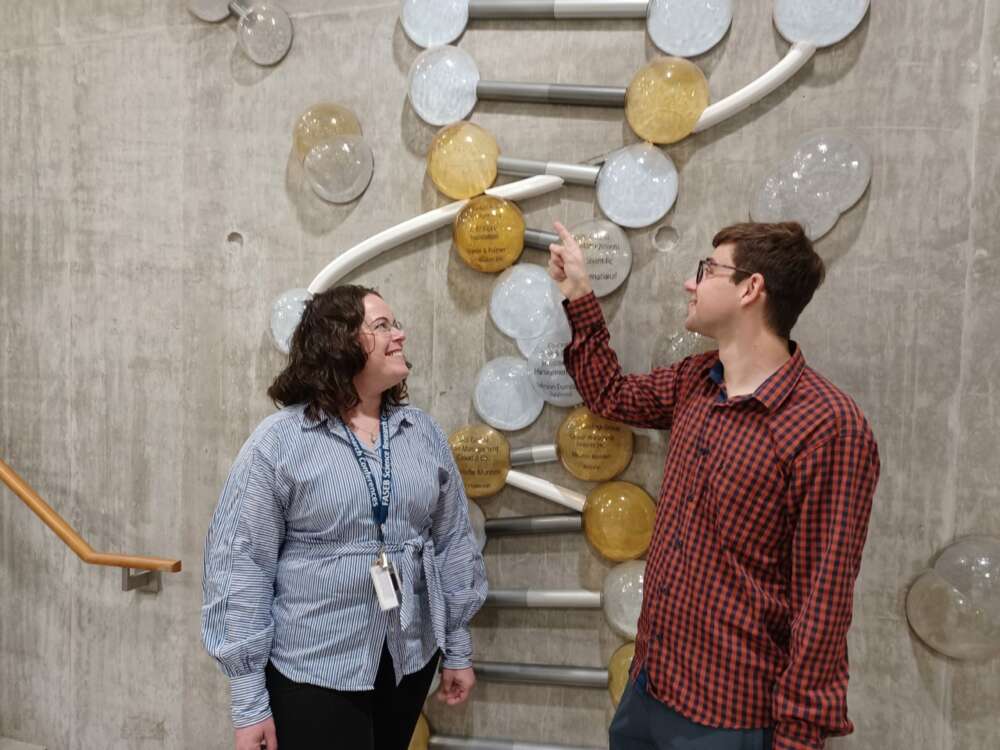Using custom-made “mini-brains” in the lab, a University of Guelph scientist aims to help thwart deadly, hard-to-treat brain tumours.

Dr. Shaun Sanders, a neuroscientist and professor in the College of Biological Science, hopes the new brain project in her NeuroPalm Lab will lead to a new way to treat glioblastoma multiforme (GBM).
The most common malignant brain tumour in adults, this disease affects about four in 100,000 people. GBM is notoriously aggressive and resistant to chemotherapy; fewer than five percent of patients survive beyond five years.
Looking to explore a potential new treatment route, Sanders’s lab will track how tumour cells “hijack” a protein associated with the cancer. The researchers hope to prevent that hijacking.
Normally, GRP78 (glucose-regulated protein 78, also known as binding immunoglobulin protein BiP) helps to fold misfolded proteins inside cells, including in neurons. Those misfolded proteins trigger a stress response that prompts GRP78 to act. Brain tumour cells effectively commandeer this process to sustain themselves and to promote cancer spread.
Protein enables cancer cells to grow, resist treatment
Sanders said GBM causes two main changes in how GRP78 works.
First, glioblastomas prompt expression of higher amounts of the protein. In a second critical difference, GRP78 is moved to the cell surface. There, scientists believe, it helps tumour cells to survive and proliferate, including enabling the cancer to resist drug treatment and increase its malignancy.
To work properly, the body’s many proteins need to be in the correct locations at the right time, said Sanders, who joined the Department of Molecular and Cellular Biology (MCB) in 2020.
“This protein gets put onto the cell surface, where it’s not supposed to be,” she said. “GRP78 then causes the tumour cells to grow and divide too much.”
What’s unknown is just how the protein gets moved. Sanders hopes to tease out the biochemical workings through her lab’s unique understanding of a process called palmitoylation.
This process is also a normal function in the body’s cells. By adding fatty acids to proteins – what Sanders calls appending a “sticky tag” – palmitoylation controls movement of proteins to specific locations where they carry out their normal range of tasks.
A ‘postal code’ for directing transport of critical protein?

“Getting proteins to the right place at the right time is a key problem for the cell to solve,” said Sanders. “We think palmitoylation is playing a major role in brain cancer. The sticky tag acts like a postal code that may direct GRP78 to the cell surface and that may keep it there.”
Sanders and her team have shown that this sticky tag is added to GRP78 under stress response in cancer cells. The researchers will study how this process works in GBM, including testing ways to intervene and ultimately foil the hijacker.
The U of G team members are the only Canadian researchers looking at how palmitoylation may aid glioblastoma in hijacking GRP78.
They will work with commercial glioblastoma cell lines. Also involved in this research are MCB professors Dr. Nina Jones and Dr. Jasmin Lalonde.
Jones and Lalonde have developed a model “mini-brain” of neurons grown in culture. The researchers will use the model to look at glioblastoma invasiveness, learn about how GRP78 gets transported to cell surfaces and experiment with ways to prevent that movement.
Lalonde also holds an earlier Brain Canada grant to study malfunctions in bipolar disorder. He serves as graduate coordinator of U of G’s neuroscience collaborative specialization.
Identifying enzymes that help drive the process may provide targets for drug companies to develop therapies for the cancer, said Sanders.
Toward a therapy for brain cancer
Much of the hands-on lab work is being done by PhD student Andrey Petropavlovskiy. “It’s our hope that by decreasing palmitoylation of GRP78 through inhibition of the palmitoylating enzymes, we can reduce the presence of GRP78 on the cell surface and, thus, glioblastoma growth,” he said.
Their work involves biochemical tests as well as imaging with microscopes in U of G’s Advanced Analysis Centre.
This project will be supported by a two-year, $100,000 grant from Brain Canada, a non-profit organization. The funding, announced in late October, will be provided through the group’s 2021 Azrieli Future Leaders in Canadian Brain Research program.
Sanders brings research expertise gained from studying protein malfunctions involved in epilepsy and ataxia, a nervous system disorder that affects coordination, balance and speech.
In both disorders, palmitoylation is also important in protein transport and activity.
“Overall, we study how proteins get trafficked in neurons and how that process goes wrong in disorders,” said Sanders.
She began looking at palmitoylation in 2007 as a neuroscience undergrad at the University of British Columbia, where she worked on a research project involving Huntington’s disease.
Her research is also supported by the Natural Sciences and Engineering Research Council as well as start-up funding from MCB.
Contact:
Dr. Shaun Sanders
ssande03@uoguelph.ca
